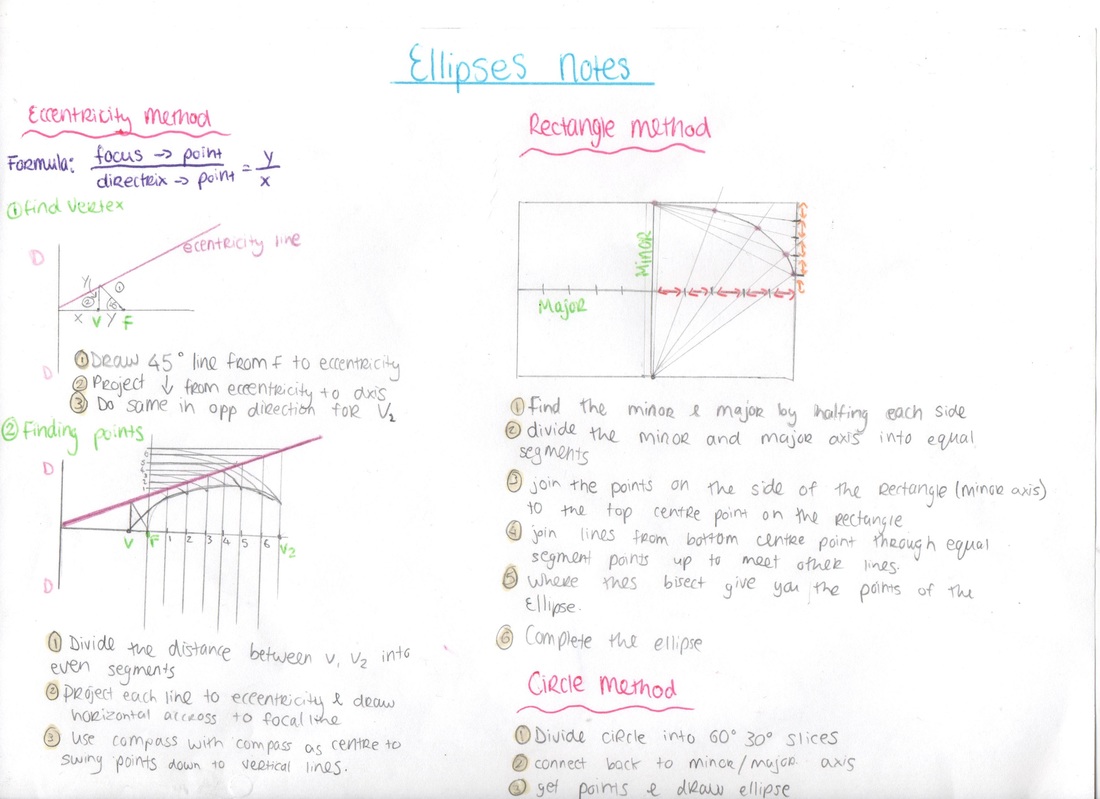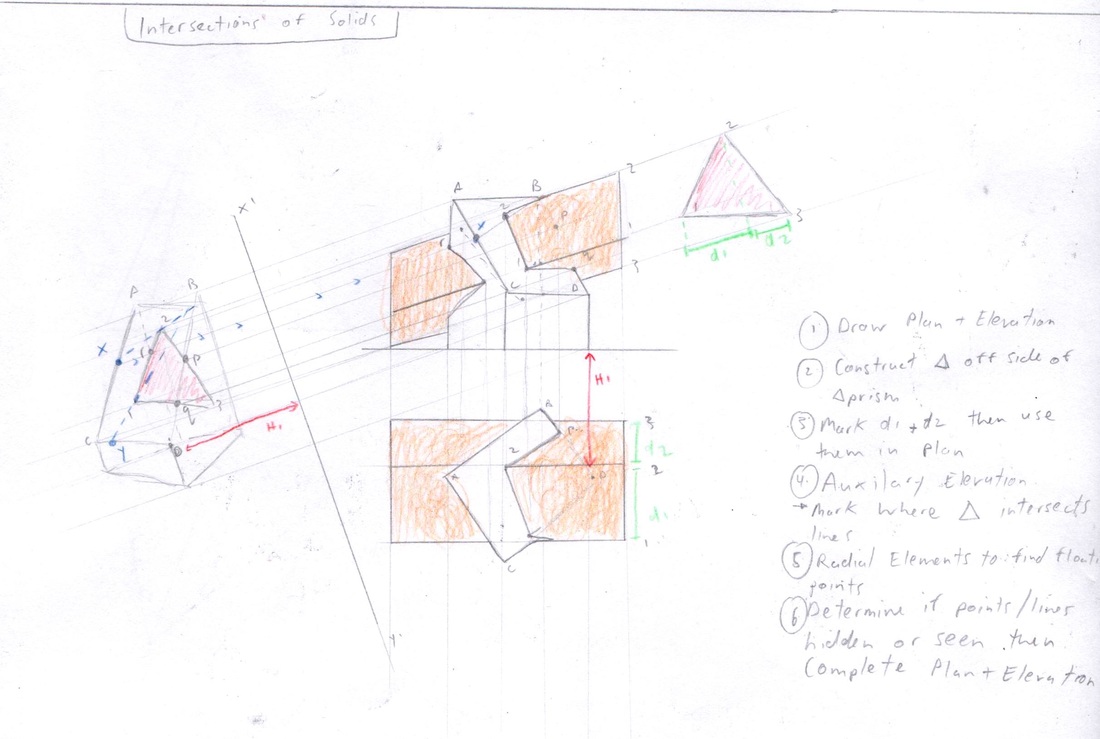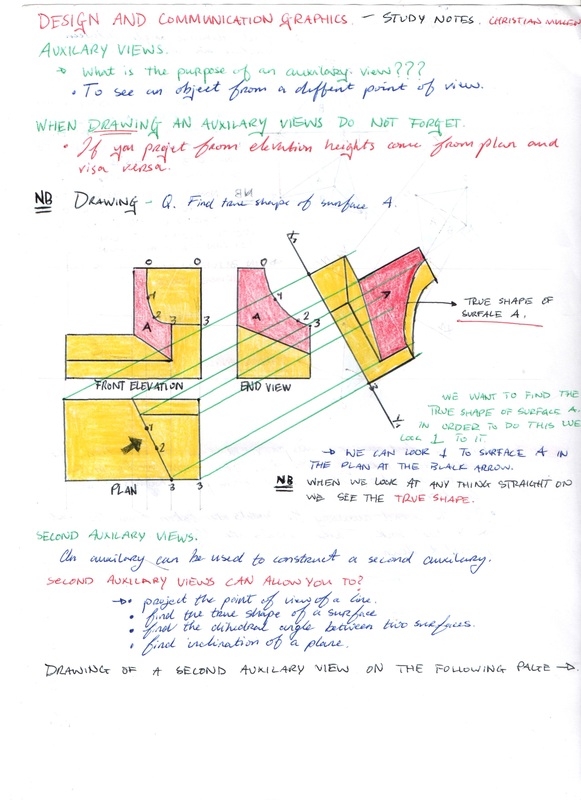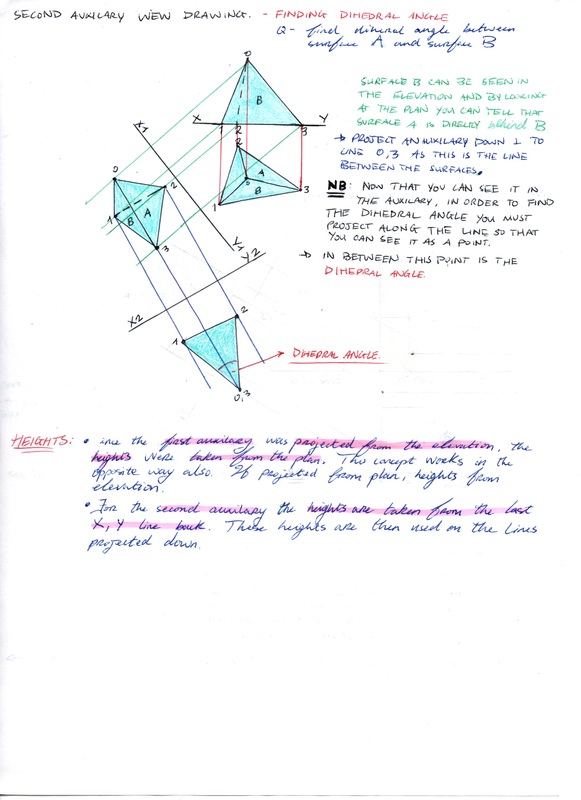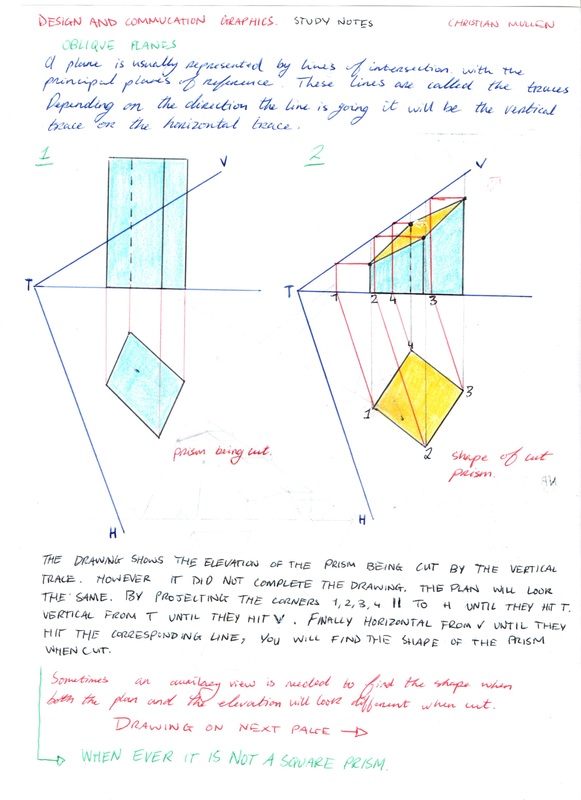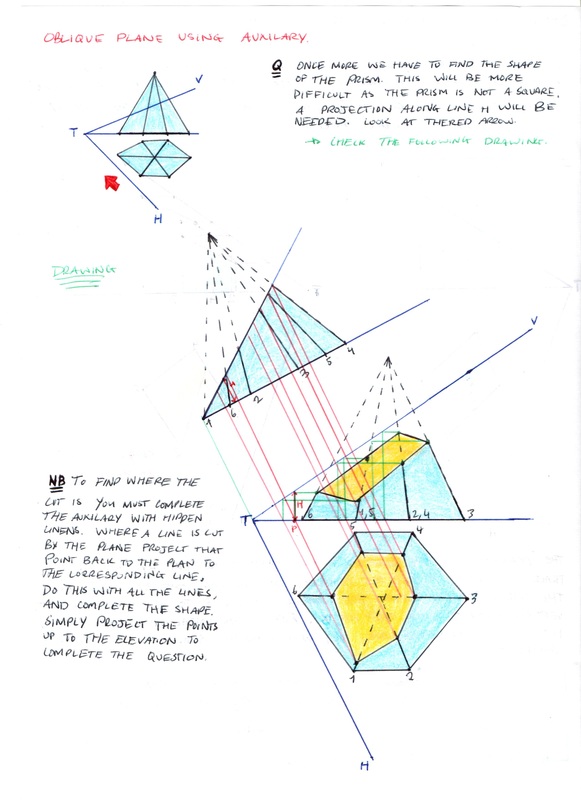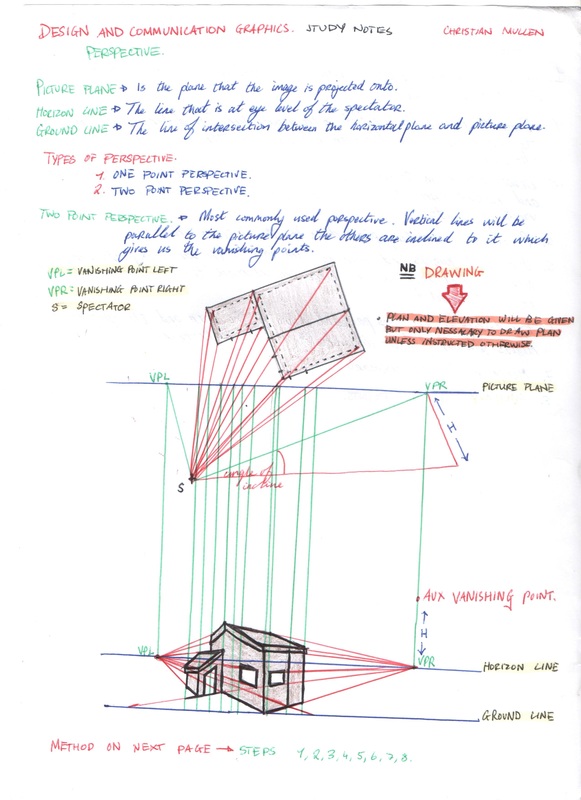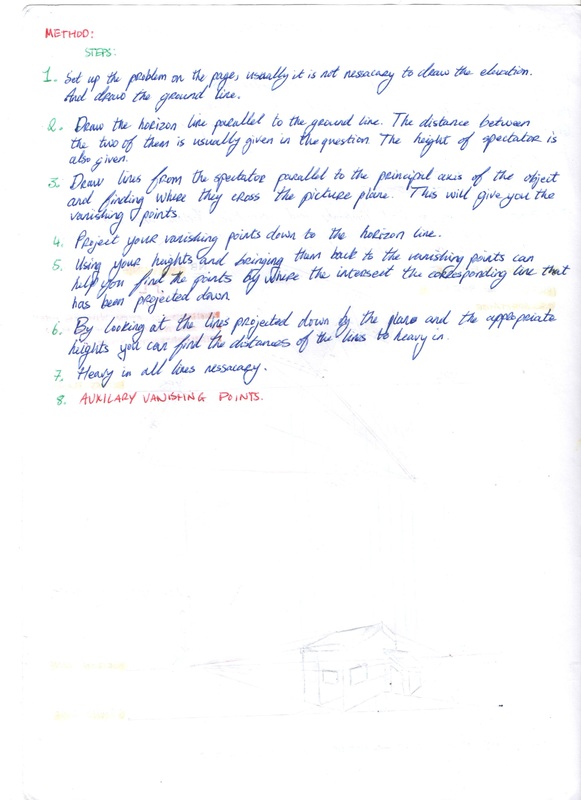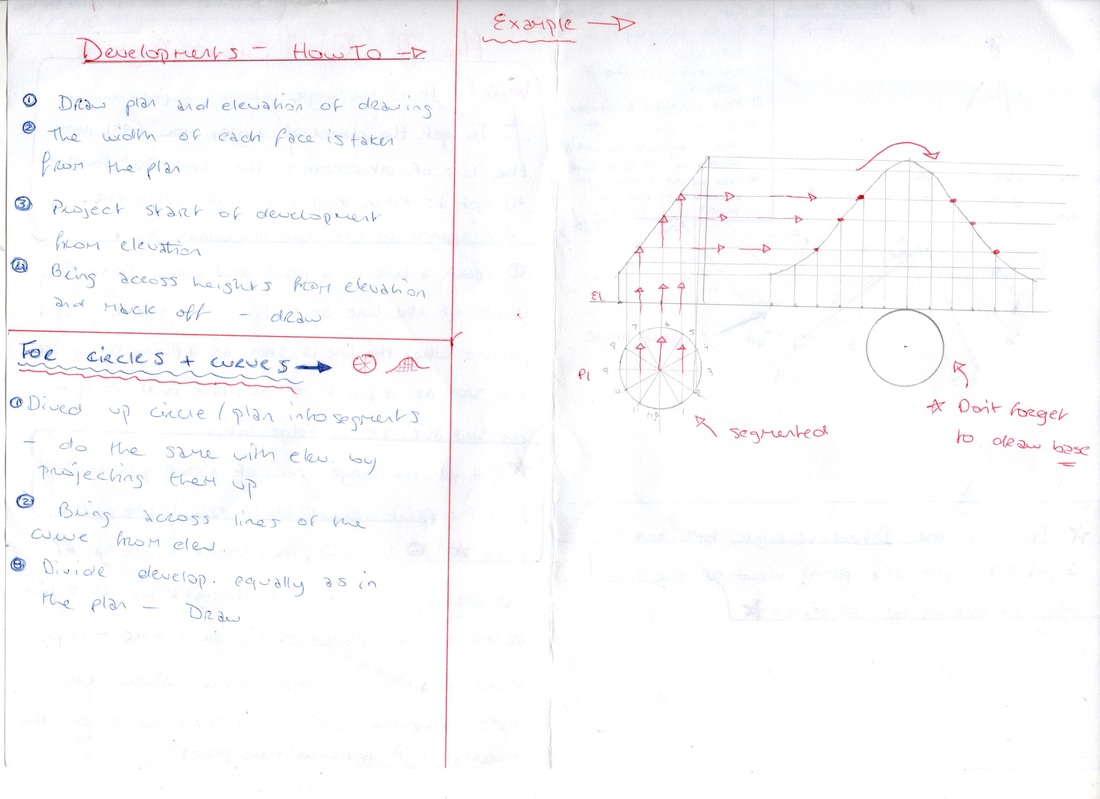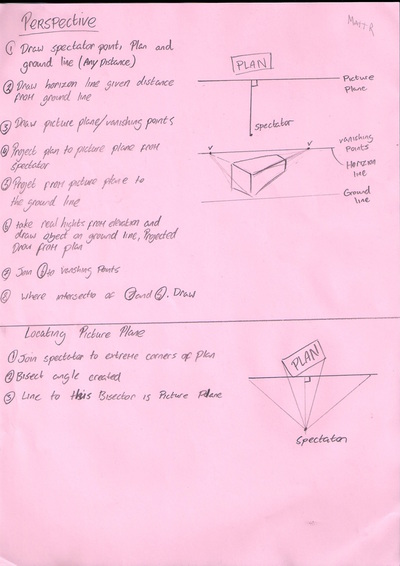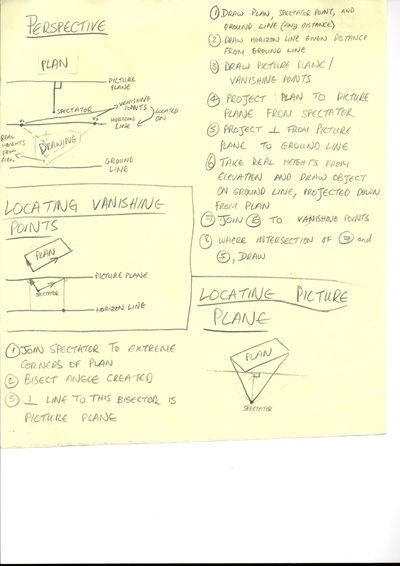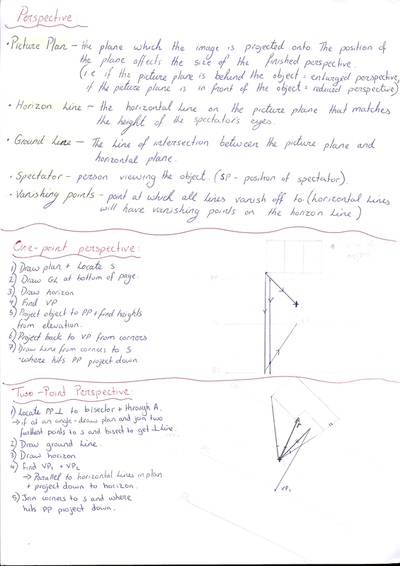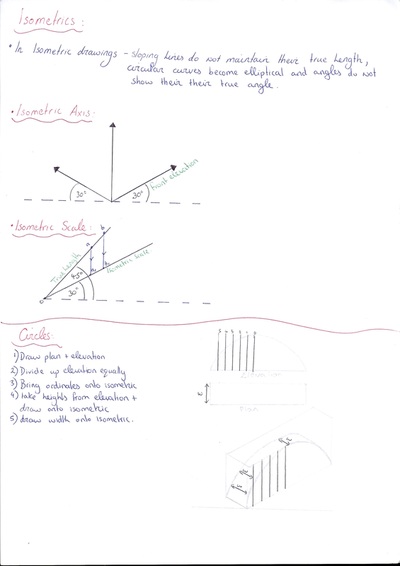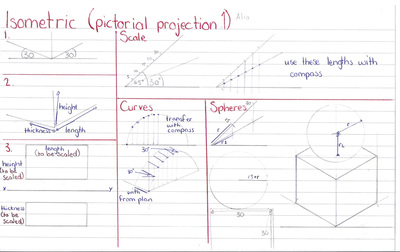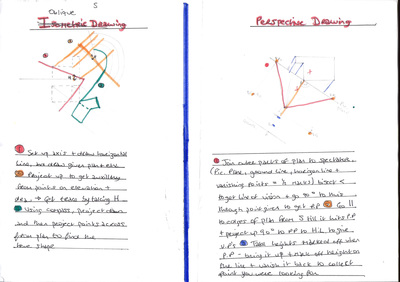DCG Study Topics
Have a look at the examples below from our students. There's no one right note making style but whatever you do, things that help are:
- Use colour to help make things clear
- Summarise the steps involved - don't just copy the page from the textbook
- Draw a diagram
Orthographic Projection of Curves
A basic skill that you need to know.
- 30 degree slices
- Ordinates
- Working with cones
- Section planes
Oblique PlaneA general skill that comes up in lots of different questions.
|
Geologic Geometry
Mining - see pp 353-356 & pp 362-363
- Terminology: stratum, headwall, footwall, dip, strike, borehole, outcrop
- Understanding contour lines
- Drawing an elevation from a contour map
- Finding strike, dip & thickness
- How to draw a skew borehole
- Using auxiliaries so solve problems
Earthworks - see 357-361 & 367-369
- Terminology: formation, cuttings, embankments
- Level roads including bends
- Inclined roads (where do you draw the semicircle?)
Envelopments
See pp 201-205
- What is an envelopment?
- Prisms
- Cylinders
- Partial envelopments
Skew Lines
2 varieties, both quite similar. Very practicable. See pp168-170
- Finding a 5th point, E
- Using E in plan to find X1Y1
- Determining direction of X2Y2
- Finding shortest distance
- Projecting back to plan and elevation
Axonometric ProjectionSee pp74-83
|
Isometric Projection |

